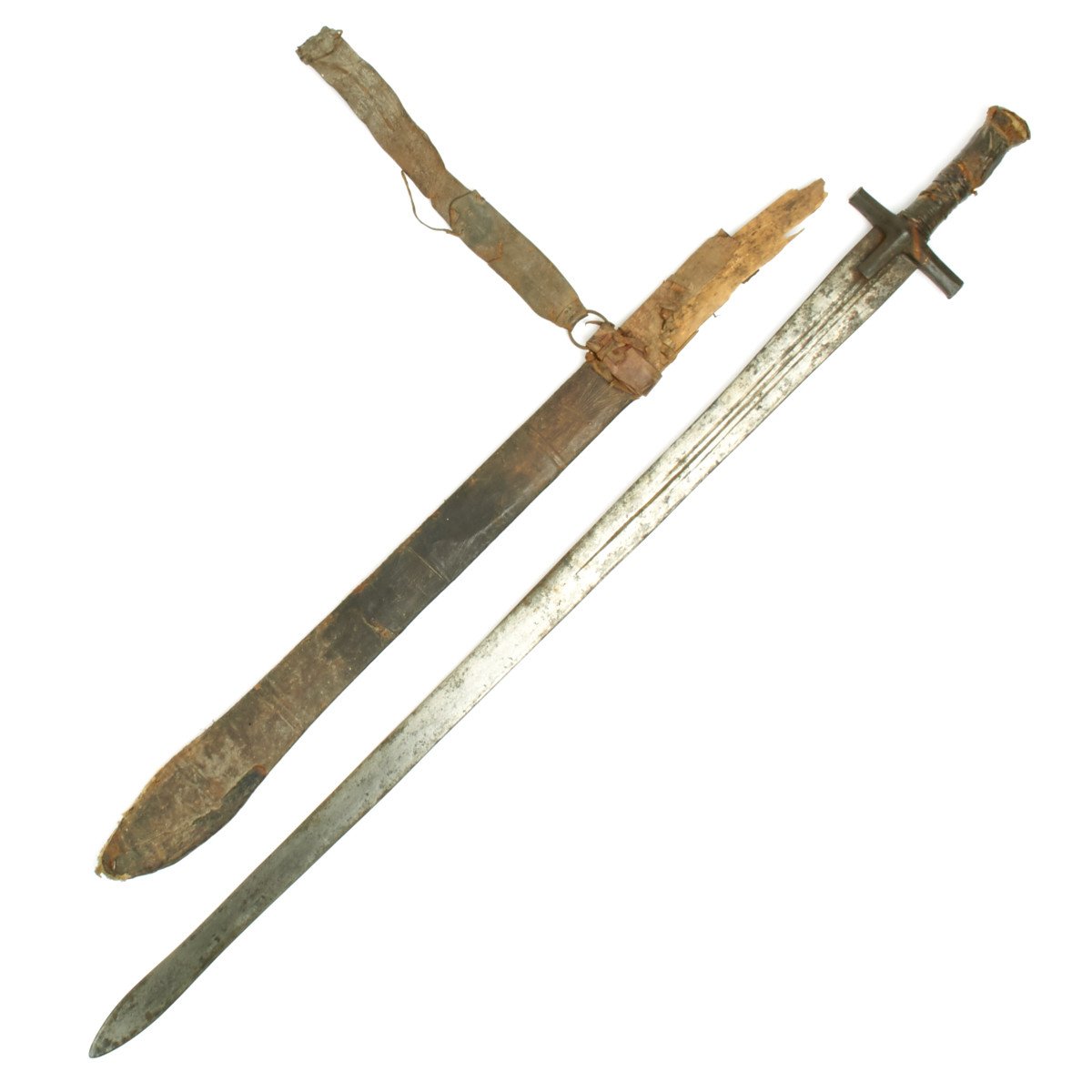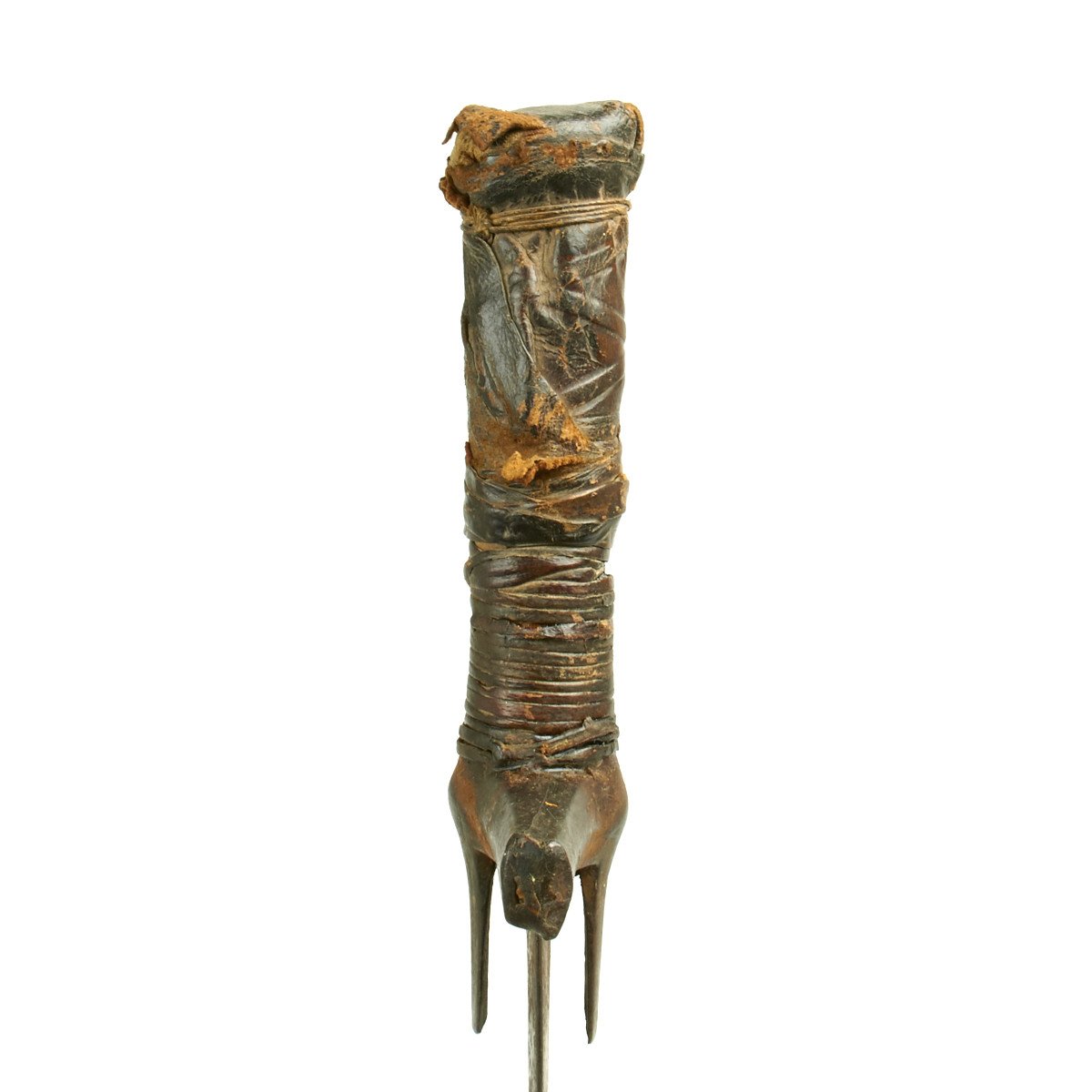Original 1880 Victorian Era Sudanese Mahdi Broadsword Kaskara with Partial Scabbard Original Items
$ 295,00 $ 118,00
Original Item: One-of-a-kind. Original Item: One-of-a-kind. In the 1880s the SUDAN the vast land just south of Egypt was ruled by the Khedive from Cairo. Sudan was basically occupied by native Africans in the south and Arab traders in the north. The coming of the Muslim religious leader known as the “Mahdi” unified the population into an uprising against Egypt.
Britain assisted and allowed General Charles Gordon to become the Governor of Sudan on behalf of the Egyptian Khedive. The result was that after a long siege the entire Khartoum garrison, including General Charles Gordon, was butchered leading to much embarrassment for the British Government. It took 14 years, until 1898 for General Gordon to be avenged with the complete destruction of the Muslim Army at the Battle of Omdurman.
The Mahdi army, numbering over 100,000, was made up of many tribes of various origins and used primitive broad swords fashioned on those the European Crusaders had carried back in the 13th and 14th centuries. These were known as Kaskaras and were carried along with a large shield.
This Broadsword, known as a KASKARA, is a great example of the principal weapon carried by the Mahdi’s warriors. These were desert people and had modeled the broadsword on those carried by the European Crusaders in the 14th century.
This particular example has really been through the Mahdi wars, it is, as they all were, based on the Crusader’s massive Broad Swords of the 12th, 13th and 14th Centuries being of crucifix shape with huge broad blades. This one has an overall length of 42″ and a huge 36″ x 2″ blade. This is a classic Dervish Kaskara Broad Sword, a fine example taken from one of Britain’s native adversaries and comes with the remains of its original leather covered wood scabbard only the bottom 60% remains.
The Sudanese Wars are famously remembered in the movies too: Charlton Heston in “KHARTOUM” and in at least two productions of “THE FOUR FEATHERS. The close of the Victorian era was the height of the Great British Empire. A British soldier’s bring back souvenir from his times on the front line.
The Kaskara was a type of sword characteristic of Sudan, Chad, and Eritrea. The blade of the kaskara was usually about a yard long, double edged and with a spatulate tip. While most surviving examples are from the 19th century the type is believed to have originated around the early 14th century, and may represent a localized survival of the straight, double-edged medieval Arab sword. The kaskara was worn horizontally across the back or between the upper arm and thorax. According to British Museum curator Christopher Spring, “in the central and eastern Sudan, from Chad through Darfur and across to the Red Sea province, the straight, double-edged swords known as kaskara were an essential possession of most men.”
Fast Shipping with Professional Packaging
Thanks to our longstanding association with UPS FedEx DHL, and other major international carriers, we are able to provide a range of shipping options. Our warehouse staff is expertly trained and will wrap your products according to our exact and precise specifications. Prior to shipping, your goods will be thoroughly examined and securely secured. We ship to thousands clients each day across multiple countries. This shows how we're dedicated to be the largest retailer on the internet. Warehouses and distribution centres can be located throughout Europe as well as the USA.
Note: Orders with more than one item will be assigned a processing date depending on the item.
Before shipping before shipping, we'll conduct a thorough inspection of the items you have ordered. Today, the majority of orders will be delivered within 48 hours. The delivery time will be between 3-7 days.
Returns
The stock is dynamic and we cannot completely manage it because multiple stakeholders are involved, including our factory and warehouse. So the actual stock may alter at any time. It's possible that you may not receive your order once the order has been made.
Our policy is valid for a period of 30 days. If you don't receive the product within 30 days, we are not able to issue a refund or an exchange.
You can only return an item if it is unused and in the same state as the day you received it. You must have the item in its original packaging.
Related products
Uncategorized
Uncategorized
Armored Burgonet Helmet & Polearm from Scottish Castle Leith Hall Circa 1700 Original Items
Uncategorized
Uncategorized
Uncategorized
Uncategorized
Uncategorized
Uncategorized
Angolan Rebel 1970s era 60mm Inert Display Mortar from Angolan Civil War Original Items
Uncategorized
Uncategorized
Uncategorized
Band of Brothers ORIGINAL GERMAN WWII Le. F.H. 18 10.5cm ARTILLERY PIECE Original Items
Uncategorized
Uncategorized
Uncategorized
Uncategorized
Uncategorized
Uncategorized
Uncategorized
Australian WWII Owen MK1 Machine Carbine SMG Custom Fabricated Replica with Sling Original Items













































































